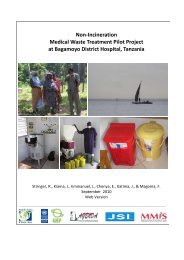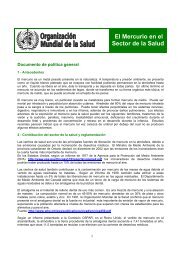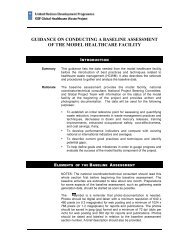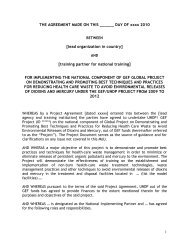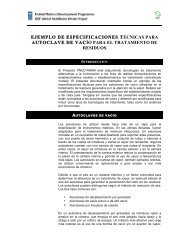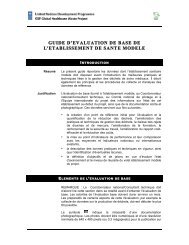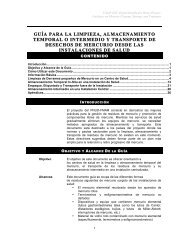Latvia
Latvia
Latvia
Create successful ePaper yourself
Turn your PDF publications into a flip-book with our unique Google optimized e-Paper software.
Health systems in transition<br />
<strong>Latvia</strong><br />
outpatient care and dental care) and prescription pharmaceuticals. The volume<br />
of territorial (geographical) allocations is based on the size of the respective<br />
populations. Territorial branches are responsible for covering all costs including<br />
patient “cross-border” flows.<br />
Both the Central Office of the SCHIA and the territorial branches plan and<br />
allocate resources for the purchase of respective services, for the most part on<br />
the basis of historical precedent. In addition, the territorial branches allocate<br />
resources for cross-border flows; in fact, mainly to the territorial branch of<br />
the capital, Riga City, where most of the expensive diagnostic and treatment<br />
services are provided.<br />
The volume of the annual health care budget depends on whether a political<br />
decision is made by Parliament to amend the law dealing with the state budget;<br />
this may occur once or twice per year.<br />
3.6 Purchasing and purchaser–provider relations<br />
Historically, the <strong>Latvia</strong>n health system was based on the principles of the<br />
integrated Semashko model of service financing and provision. The health<br />
sector was publicly financed and all levels of service provision were planned<br />
and centralized. The reforms of the 1990s splitting the purchasing and providing<br />
functions aimed to create incentives for more effective management. This was a<br />
2-step process initiated in 1998 and resulting in establishing in 2004 one single<br />
central state purchaser agency.<br />
New payment mechanisms were introduced, together with a series of<br />
changes from an integrated to a decentralized health sector model, including<br />
institutionalizing a purchaser–provider split, changing ownership of provider<br />
institutions, and giving greater autonomy to provider institutions to manage<br />
their budgets.<br />
Although the purchaser–provider split was intended to proceed further and<br />
eventually develop into a social insurance system consisting of autonomous<br />
purchasers that would collect insurance contributions and organize services,<br />
these reforms never materialized. The main reasons for this included the overall<br />
scarcity of financial resources in the health sector, expected administrative<br />
difficulties in rearranging the system of public revenue collection, as well as<br />
the expected increase in administration costs, all of which prevented reformers<br />
from undertaking radical activities.<br />
Following the recent organizational changes, the current model of service<br />
provision is based on contracting between the SCHIA (which acts as a principal<br />
93





